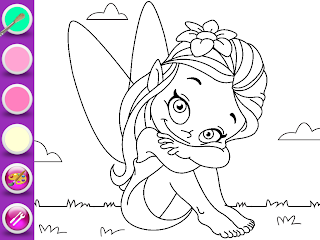Recently Melissa Atkins Wardy, founder of
Pigtail Pals & Ballcap Buddies and author of the forthcoming
Redefining Girly, sent this tweet:
Asking for insights on how Barbie can be used in adventurous stories during play
Melissa's
blog post notes that a lot of people, a LOT, shrug off the criticisms of Barbie with a "I played with Barbies, and I turned out just fine" response. Well, I played with Barbies too. And I think I've turned out to be fantastic...but I'm not sure we need to give Barbie credit, or even a pass, on that basis. Not least because, as Melissa points out, Barbie back then is not Barbie now.
 |
| A Barbie science station with swiveling chair and gadgets: they don't make 'em like this nowadays. (Thanks to my friend Wendolyn for giving us this awesome piece of her childhood!) |
On the other hand, during my research for
Cyborg Selves, I came across
Cyborgs and Barbie Dolls by Kim Toffoletti, which theorizes Barbie's plastic figure as plastic in a metaphorical sense, and describes the subversive ways that Barbie can function--for example, in transgender play. It was this book that, when Clare first started asking for a Barbie doll, inspired The Great Barbie Project of 2010: my attempt to reconstruct and subvert in various ways a bunch of Barbies from our local thrift store. I cut hair short, I dyed hair pink and blue and gray, I drew tattoos, I drew wrinkles, I drew punk rocker makeup, I tried to erase existing makeup, I sawed off legs at the knee and made artificial cheetah sprinting legs out of duct tape and popsicle sticks, I bought a tuxedo outfit
a la' Maddow, I sewed a pair of jeans and a muumuu and knitted a maternity dress.
While I deemed that mostly a failure at the time, with the sole exception of
the knitted preggie Barbie dress, I think the strategy itself has some merit--though also, some hard limits. Barbie can--indeed does--in some sense serve as a blank slate to be projected onto, a kind of "everywoman" template that can be filled in according to the notions of those engaging with her in play. This then has some potential for liberating, adventurous play--even when the ready-made options are limited and myopically princessy in focus. We can encourage our kids to disregard those artificial restrictions and act out their own interests. Barbie can be an astronaut mommy who lives on the moon and studies moon rocks with her kids, if that's what your kid is into. Have space suit, will travel.
I still feel, however, that my conclusion at the end of the Barbie Project, that the hard plastic body of a Barbie represents the limit of its potential for subversive play, is correct. Partly this has to do with the pragmatic difficulty of altering a Barbie's basic shape. Although there is, apparently, a thriving
subculture of Barbie alteration, the skills and tools needed to alter the basic body shape went far beyond what I had at my disposal. I could cut and dye hair, change clothes--but anything beyond simple outfits or cosmetic changes was beyond me. A more serious consideration, though, is the same "universal" aspect of Barbie that allows her to function as an "everywoman" template--and the way this makes Western blond big blue eyed beauty the "universal." Fine, protest that there are brunettes and different skin shades, etc.--they're blond Barbie with cosmetic changes: same face, same body. Clones with darker pigmentation. (See
here for a summary of discussion regarding the "new black Barbies"--who still basically fall within Eurocentric beauty ideals.)
So, while I'm glad that we have the old-school Barbie science station with the awesome 70's chic swiveling chair, I'm even more glad that Clare doesn't much play with the Barbies she has.
It feels like this is where the conclusion should go, but there's one more twist.
A couple years ago--also, as it happens, as part of researching
Cyborg Selves--I came across a blog post from a transhumanist point of view on Toy Story opining that what we really need in the world is more kids like Sid (I can't track this link down now, unfortunately). I agreed and disagreed--Sid's lack of empathy was what made him the 'villain' in contrast to Andy, and we certainly don't need to valorize lack of empathy--but, his creativity and skill in constructing posthumany-wumany type toys was, totally, absolutely, cool. And yes, we ought to be encouraging our kids to think outside the prefabbed play options they're handed, and do cool imaginative stuff with their stuff!!!
And so, I'm even
more glad that Clare's Barbies are currently a heap of disarticulated body parts, and that when she plays with them, she tends to mix and match pieces freely. At the moment, the most complete Barbie is a single leg with a head stuck on it. And many of the faces have, um, custom permanent makeup jobs and
very special haircuts.
If there's a way to capitalize on the plasticity of Barbie with a minimum of damaging body-image internalization, I'm pretty sure my 7-year-old has found it.








